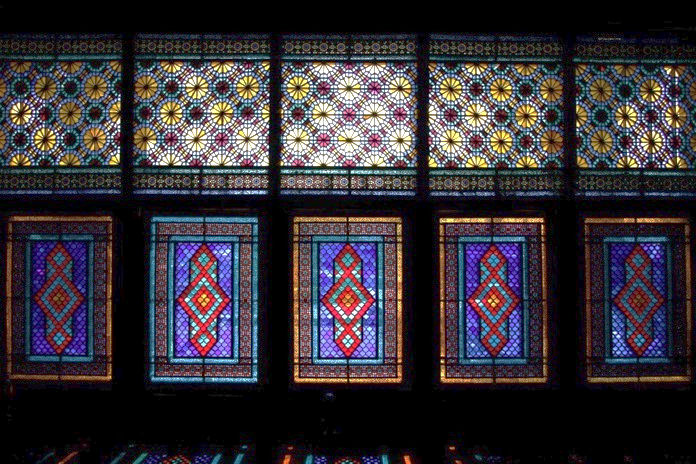
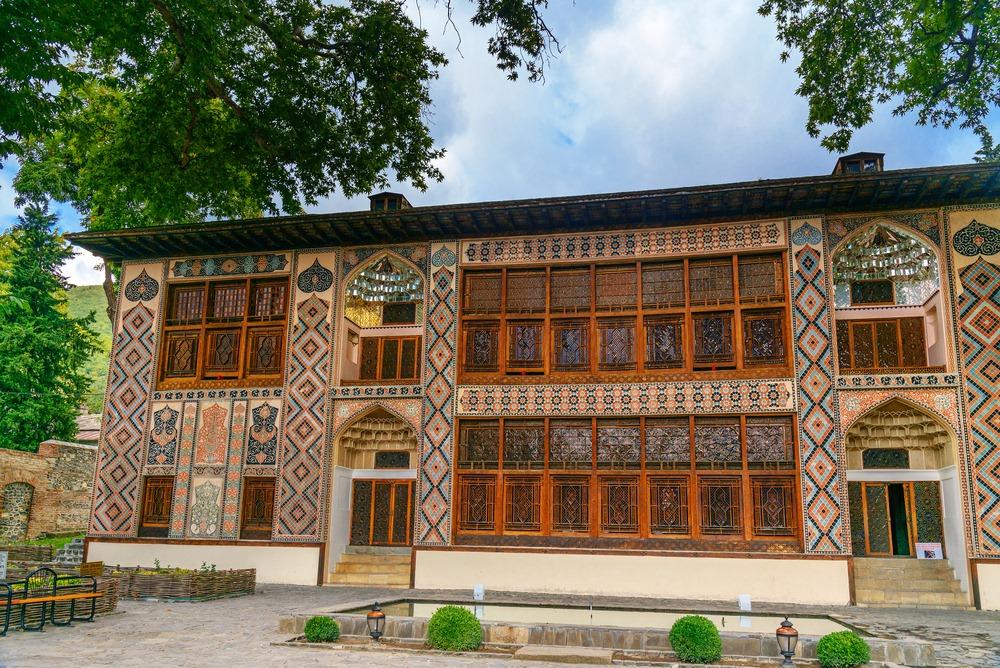
Above: Front of Sheri Khan's Palace. Photo credit: Elena Odareeva, Shutterstock.com
The Sheki Khan’s Palace in Sheki is a historical and architectural monument of world importance. Sheki Khan Palace is part of the historic city of Sheki in Azerbaijan. Sheki is located at the foot of the Greater Caucasus Mountains and divided in two by the Gurjana River. The building of the Khan’s Palace is situated in the northeast of the city, and along with a number of merchant houses, the structure reflects the wealth generated by silkworm breeding and the trade in silk cocoons from the late 18th to the 19th century. The palace also features folk residential construction traditions and is considered as one of the finest examples of 18th century palace architecture in the Caucasus and Muslim East. Due to the aforementioned distinctions, in 2019 the Palace and the territory of the historic city of Sheki, were included on the UNESCO World Heritage list.
The architectural and aesthetic elements inside the Sheki Khan’s Palace are remarkable. A two-storied building with a length of thirty meters covers an area of 300 square meters. The palace consists of six rooms, four corridors and two mirrored balconies. What makes the Sheki Khan Palace unique are the 5,000 wooden and glass detailed windows called ‘Shebeke’ and the picturesque wall and ceiling paintings across the inner walls.


Shebeke is a traditional stained glass window technique. The local craftsmen assemble the gratings for such windows from standard wooden components held together only by frequently ornamented dowels and pieces of multicolored glass. Shebekes were widely used in 18th-and 19th-century Azerbaijani architecture. The light that goes through these windows creates a visual feast for the eye of the viewer as it colors the walls and floor of the interior where the windows have been installed.

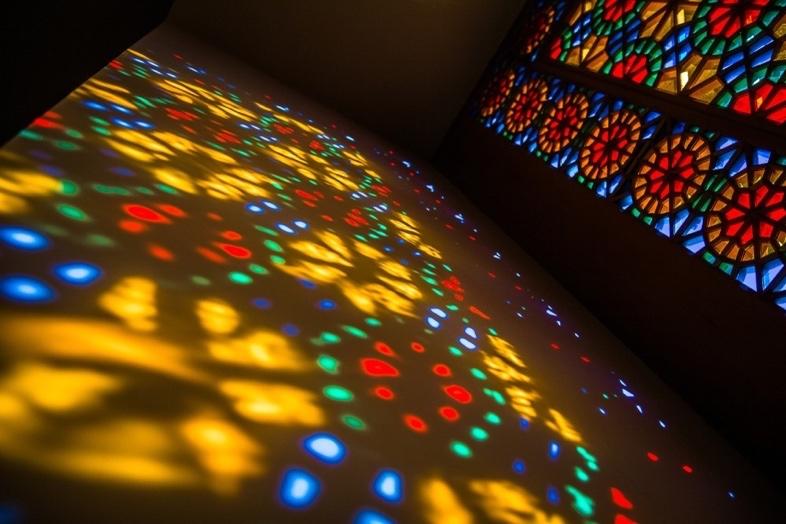
Another interesting feature of the Palace which makes it quite unique amongst Islamic architecture, is the design of all inner wall and ceiling surfaces. All of these surfaces have been covered with drawings which depict a wide variety of geometric shapes, contain images of plants and herbs, and most importantly, portray scenes depicting life of the original owners of the Palace.

The paintings of the ruler’s life detail scenes of him hunting, fighting and celebrating holidays. Considering Islam was a predominant religion in the region, most of these depictions include nonrealistic and unidentical human faces. This is often initially surprising for Muslim visitors as Islam does not permit the portrayal of human images. Drawing or recreating human form was like competing with God, hence only He could create life. These paintings are located just below the ceiling and run across all walls following certain narratives. Unfortunately, most of them are too high for a close looking experience. Otherwise, one could spend hours looking and examining these unique depictions of the past which is an incentive to visit the Sheki Khans Palace over and over again.


The locals speak of the Sheki Khan’s Palace with exceptional sense of pride and honor. I was born and raised in Sheki too, so I feel the same way about the palace. According to conversations with numerous friends and relatives, there are two primary reasons for these feelings. The first being the majority of palace architecture did not suffer significant damage during two Russian invasions of the area; in 1827 which ceased the existence of the independent local government called the Sheki Khanate and the following invasion in 1920, the Bolshevik occupation which ended the existence of the Azerbaijani Democratic Republic (1918 – 1920). Unlike the architecture, the furniture didn’t survive the invasions, hence nearly all artifacts from the interior of the palace, were looted, destroyed or illegally exported out of the country. There is not an exact date as to when the palace started operating as a museum, however, it is known that in 1968 Sheki Khan’s Palace and the area of the historic center of Sheki city, were recognized as a historic-preservation site by the Soviet government. Despite some bitter memories of the past, Sheki Khan’s Palace is considered a symbol of strength and resilience of history, culture and traditions.
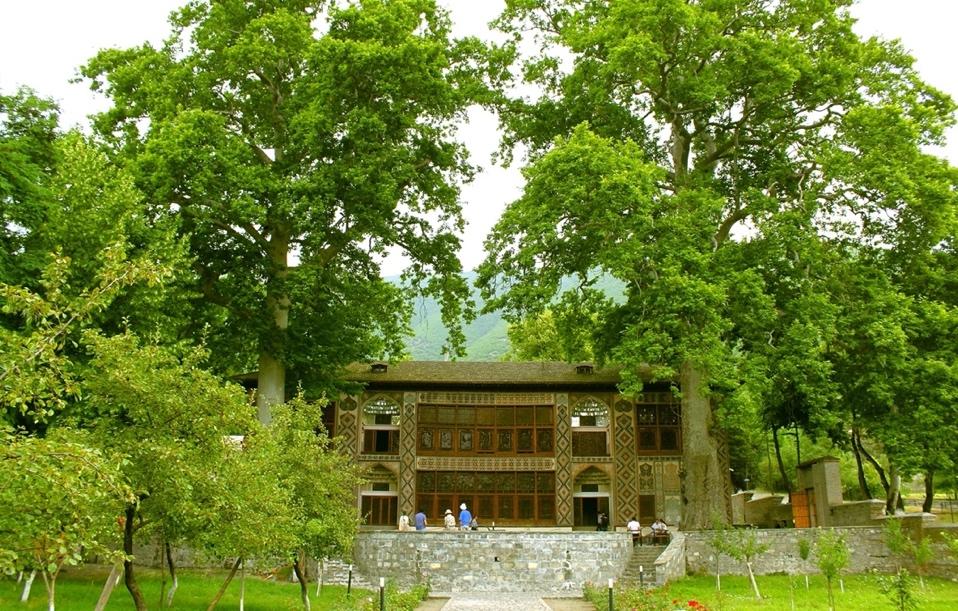
Following the restoration of independence, the government of the Republic of Azerbaijan increased resources for the preservation and restoration of the historical site bringing world recognition. In 2002 the palace underwent major restoration work. One of the updates was replacement of the old floors with modern day parkette. This modification visually lessoned the architectural authenticity of the time period it represented. Additionally, a climate control system was installed to maintain a stable temperature and moisture level for the preservation of the craftmanship within the structure.
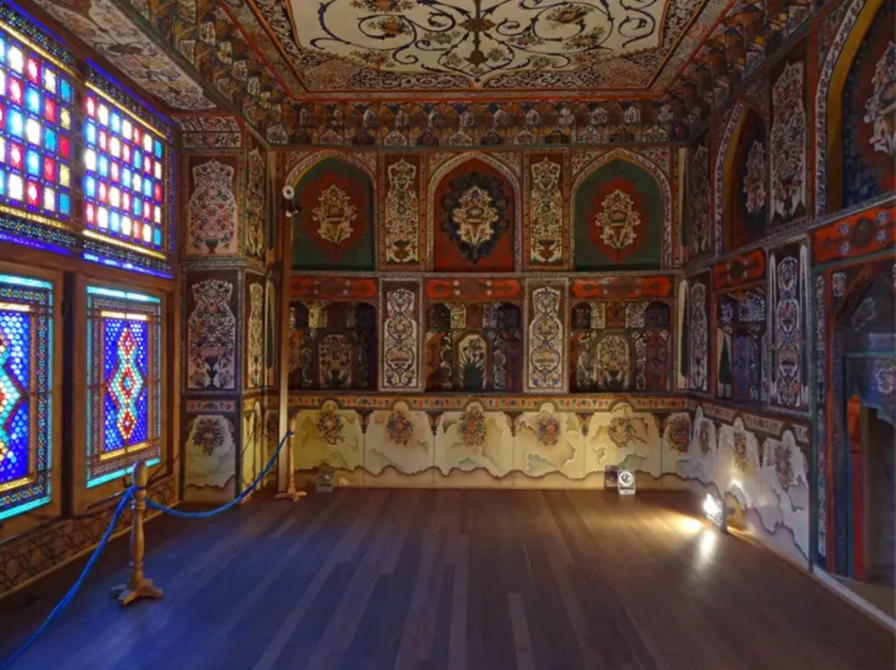
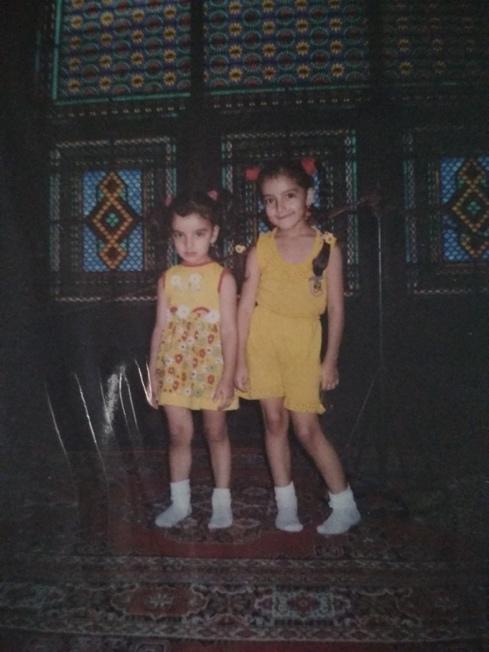
I visited the Sheki Khan’s Palace for the first time with my father and little sister when I was 7 years old. One memory I clearly recall from that visit is a sense of familiarity which I experienced at the footsteps before entering the palace. This feeling was enforced by a “No shoes” rule inside the Palace. I remember taking my shoes off at the bottom of a short staircase which led to the main doorway of the palace. I was used to taking my shoes off when visiting relatives’ or friends’ house, but this was a museum, not a house. I expected this space to be removed from the practices of daily life. Contrary to my original perception of the museum, the rules enforced the same behavior as a majority of Azerbaijani households. Personally, the familiarity to this custom invoked a sense of familiarity with Sheki Khan’s Palace from the front steps.
The reason for requesting visitors not walk inside the museum with shoes from the outside, was to preserve the floors of the palace from deterioration. In the early 2000’s, when I first visited the museum, the floors in the building were significantly old and therefore susceptive to dirt and moisture from the outside world. After restoration works in 2002, palace visitors are required to use provided plastic shoe covers on top of regular footwear, eliminating the need to remove shoes.

After the first visit, I returned to the palace many times. I always tried to imagine the interior design of those rooms. In fact, it was easy to do since the rooms of the palace do not have any physical artifacts belonging to the owners. Palace tour guides told visitors the original artifacts were transported and incorporated into the collections of world-renowned museums, such as the Victoria and Albert, British, and Russian Hermitage Museum in Saint-Petersburg for preservation purposes. At first, I was excited the artifacts from my hometown were featured in those institutions, so I searched through their online collections and sent direct inquiries. Unfortunately, all of my attempts to locate traces of the artifacts from Sheki Khan’s Palace were unsuccessful. However, speaking to the narrative given on museum tours, I am convinced belongings from the palace were either destroyed to erase the locals’ memory of their past independence or included into museum collections without adequate research.
An individual who visited Sheki Khan’s Palace at least once would certainly want to return. The aesthetics of its architecture and the intricate paintings on the walls and ceilings require more time for close inspection and contemplation. While standing inside the rooms, it’s hard not to be mesmerized by multicolored light which enters the rooms through Shebeke windows. In addition to its undeniable beauty and artistry, the palace stands as a symbol of resilience and strength in the face of foreign occupations, not only for local residents, but for the whole Azerbaijani nation. Sheki Khan’s Palace is a UNESCO protected world heritage site which provides opportunity to experience art, culture and history in one place.
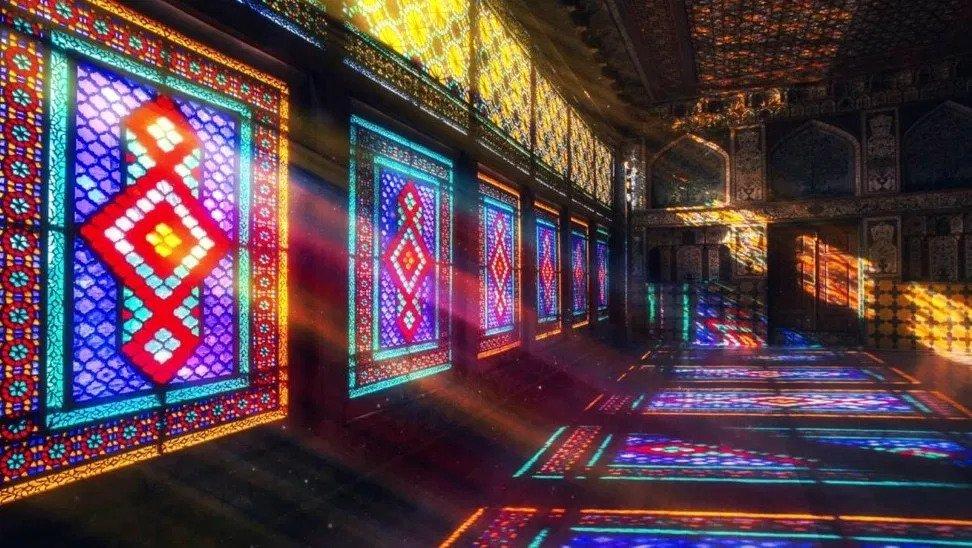
Location: The Historic Center of Sheki city,
Mirza Fatali Akhundov, Sheki, Azerbaijan, 5503
Hours: 9AM- 7PM; Tues – SUN
Tickets: https://bit.ly/3qWiRNx
Indoor photography: Additional payment
Phone: +994 51 618 5973
https://unesco.preslib.az/en/page/pvebY7yjd4
https://encyclopedia2.thefreedictionary.com/Shebeke
https://www.baldhiker.com/2012/12/24/azerbaijan-sheki-kahns-palace/
https://wander-lush.org/sheki-azerbaijan-guide/
https://bellezza-storia.livejournal.com/477787.html
https://www.skyscrapercity.com/threads/sheki-khan-palace-Şəki-xan-sarayı.913774/
https://www.amusingplanet.com/2018/08/palace-of-shaki-khans.html
http://litetrip.ru/azerbajdzhan-gorod-sheki-xan-saraj-i-medovaya-xalva.html
https://az.wikipedia.org/wiki/Şəki_xan_sarayı#İnşası
https://commons.wikimedia.org/wiki/File:039palas.jpg
https://www.walkingworlds.com/azerbaijan/sheki-food-art-history-and-life/
* * *
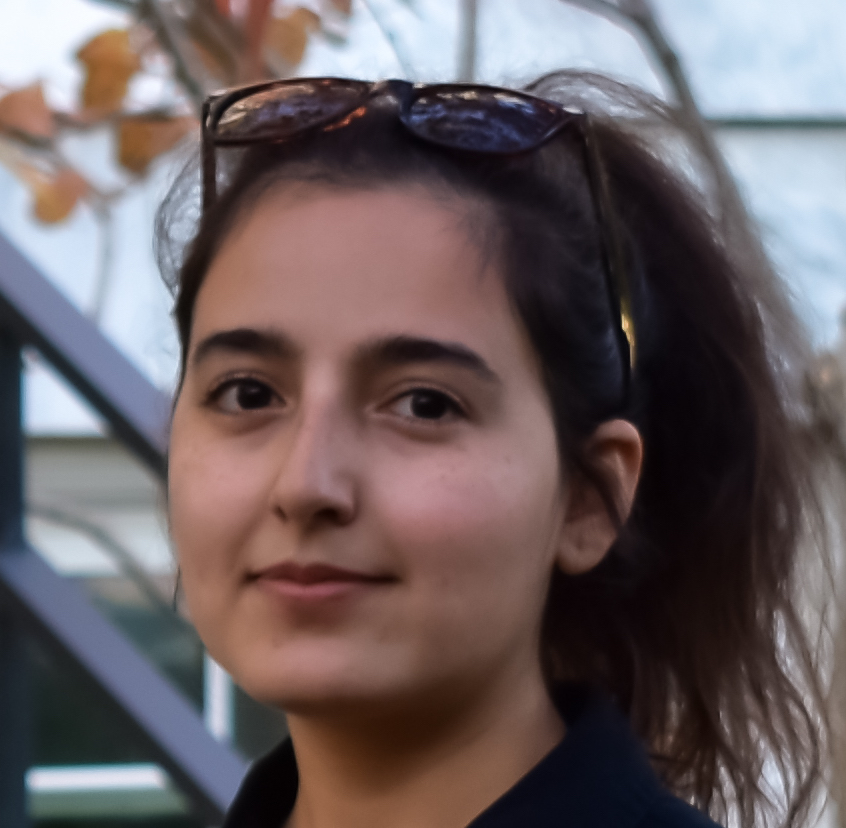
Sayyara Huseynli is from Sheki, Azerbaijan. Currently, working on Master of Art in Museum Education at Tufts University. The visitor motivations and participatory learning principles lay foundation of my museum teaching practice. Outside of work, I am interested to expand my understanding of human physiology, phycology and various artistic practices across the world. I am fluent in English, Turkish and Russian, in addition to native Azerbaijani languages.